Soccer is a very physical sport, and as players our bodies need to be adequately protected from injury.
One of the most frequent places where athletes competing in this sport get hurt is on the legs, particularly due to the grazes and abrasions that come about from contesting for the soccer ball.
But shin guards are able to save us from so much leg pain whilst we play, especially because they act as a protective barrier for our legs.
Now, learning how to use this piece of equipment can be quite a challenge for some.
So, in this article we’ve dedicated the time towards outlining the step-by-step process for how shin guards should be worn.
Let’s get started!
How to put on soccer shin guards
The process for wearing soccer shin guards should be relatively straightforward, especially if you adhere to following the outlined steps below.
Here we go:
1. Slide the shin guard up your shin
This first step is done if you have shin guards that come with additional ankle support.
For those with another type of shin guard at their disposal, you’d skip this step entirely.
So, for the former group, you’ll want to slip the ankle support area through your ankle and heel.
That would be done like this:
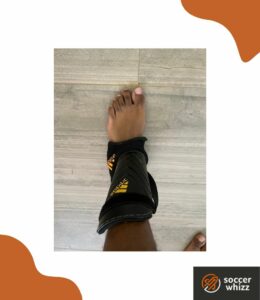
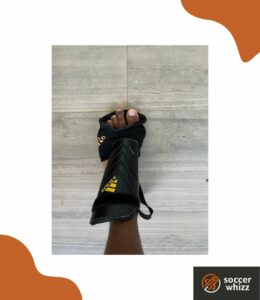
Once that is done, you’ll simply move the shin guard up towards the middle of your shin and proceed to the next step.
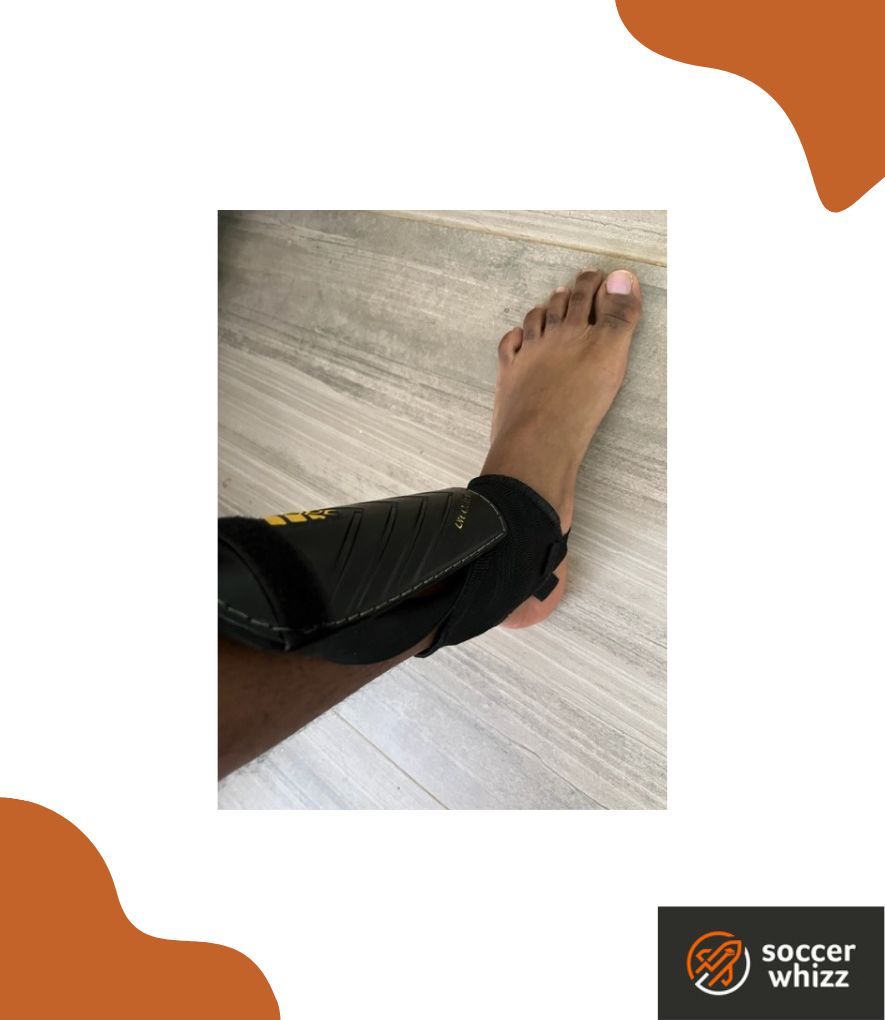
2. Position the shin guards carefully
Shin guards are only as effective as where they are placed on the leg.
If you positioned them on the lower part of your shin and happened to receive an impactful blow to the upper area of your leg, there wouldn’t be any cushioning to soften the force, which would subsequently lead to a lot of pain.
That’s why this step is very important.
You’ll therefore want to ensure that the shin guards are centered on your shin and not positioned off to either side of your leg.
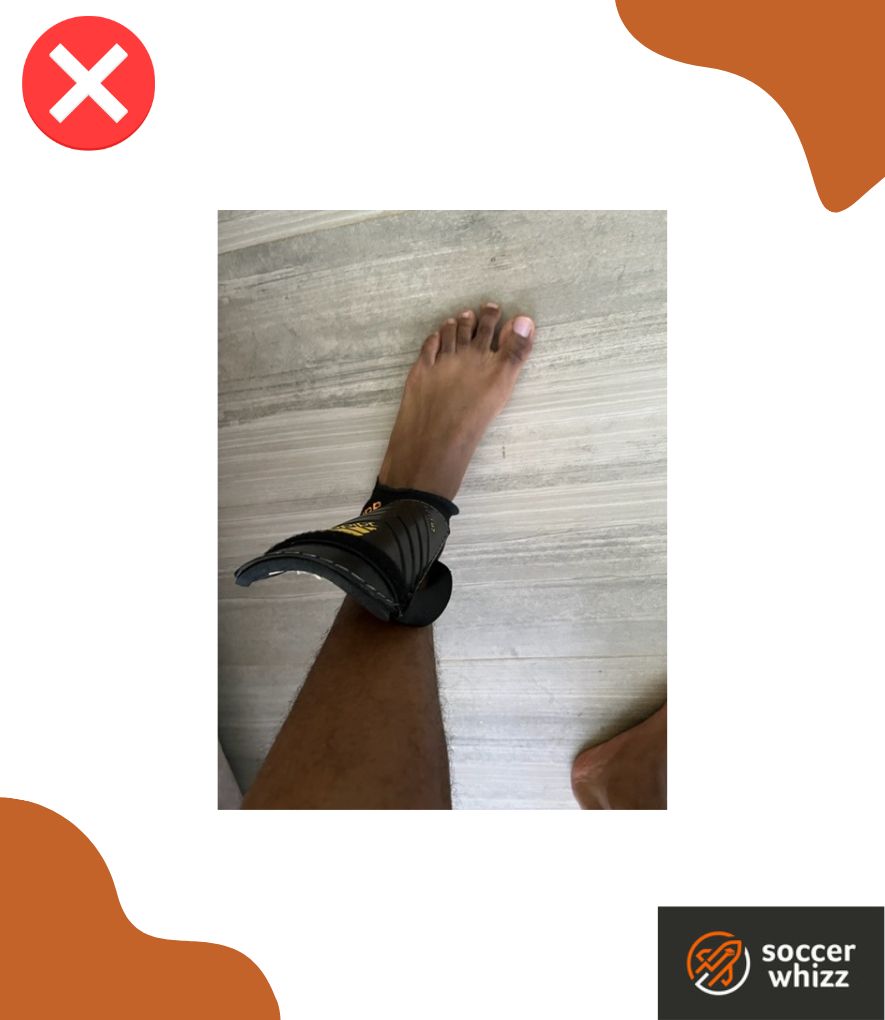
When fitted correctly, the shin guards should sufficiently cover the area below your knee all the way down towards your ankle.
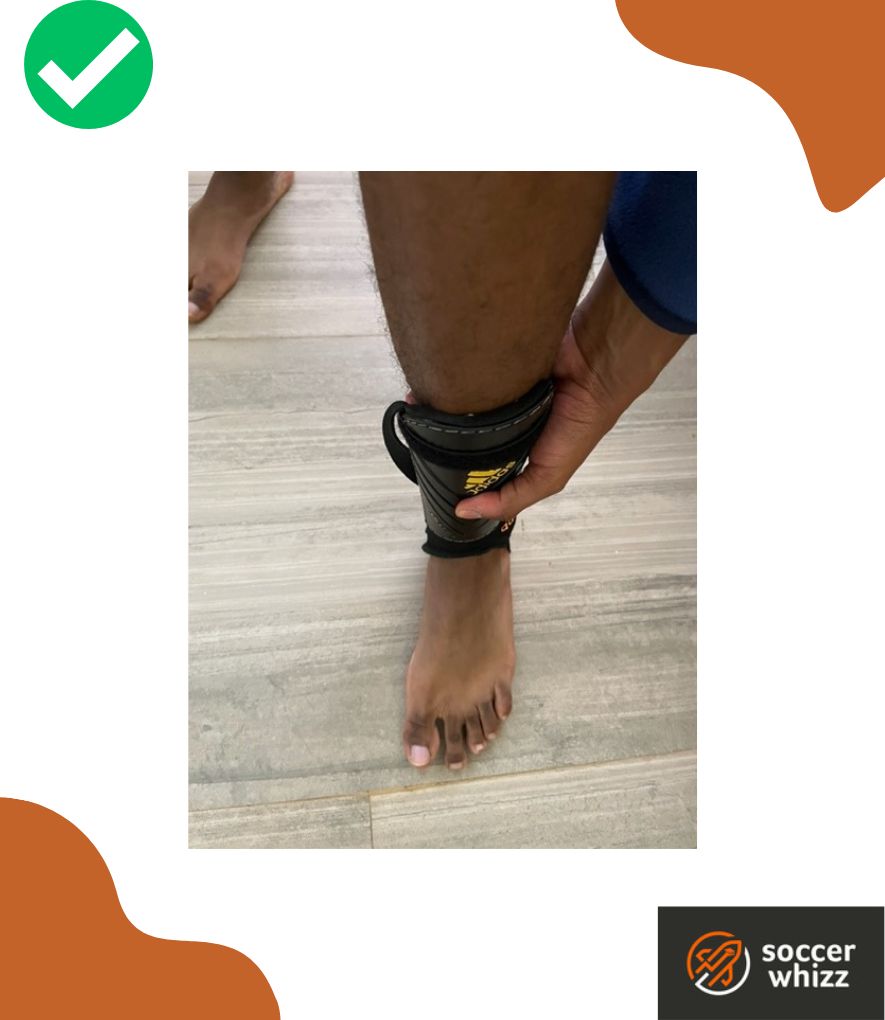
For those shin guards that come with ankle padding, the reinforcement should extend to this area of the body as well, as the ankle padding should cover up the bony sections on both sides of your ankle.
Like so:
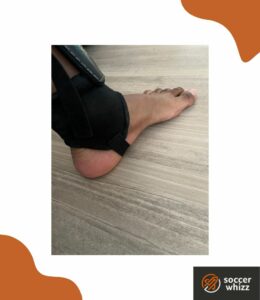
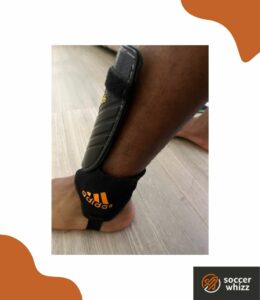
Don’t move on to the next step before ensuring that your shin guards are properly positioned.
3. Fasten the Velcro strapping securely
Your shin guards should come with Velcro strapping, which is what is used to secure the fit in place.
The last thing you’d want is to have to keep adjusting your shin guards as you play.
A key point about the strapping is that it should be snug enough to prevent your shin guard from moving as you run on the pitch, but at the same time it shouldn’t be so tight as to restrict the circulation of blood traveling to and from your legs.
At this stage, use one of your hands to hold on to the shin guard in place whilst using the other one to adjust and fasten the Velcro strapping.
Like this:
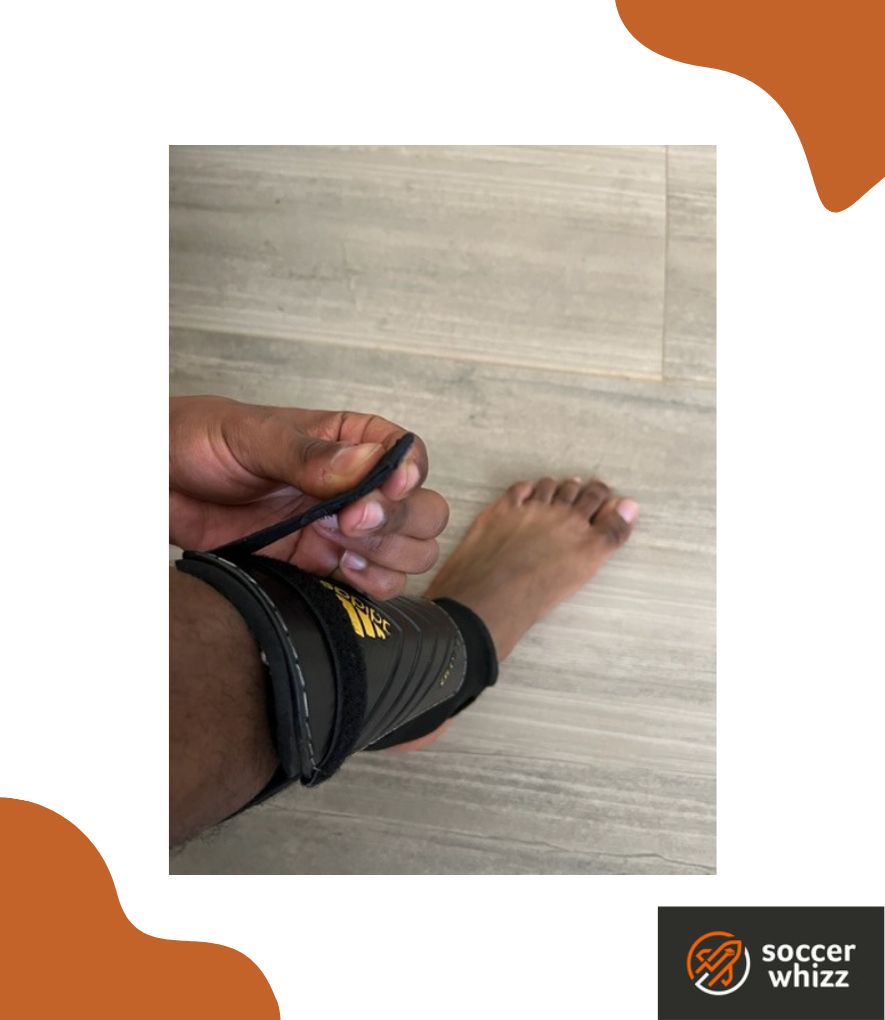
Notice how the strapping wraps around the leg to keep the shin guard stationary.
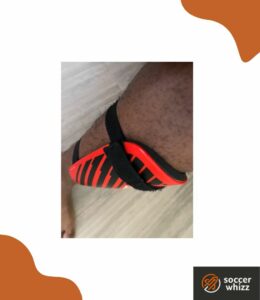
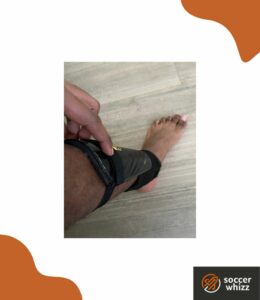
4. Tape your shin guards if necessary
This step is optional and will depend on the user’s personal preference.
What it entails is using athletic tape to secure the shin guards even more.
You’ll find that during some intense games, the Velcro strapping talked about in the earlier step isn’t enough to prevent the shin guards from moving into awkward positions or falling out of place as you play.
So, this step essentially acts as an extra measure to keep the shin guard fit intact.
Here, you’ll wrap athletic tape around the top and bottom of your shin guards.
Then you can test the shin guards yourself by seeing if they move up, down or to the side as you run and kick a soccer ball.
5. Pull your soccer socks over the shin guards
The penultimate step involves wearing your socks over the shin guards themselves.
Like this:
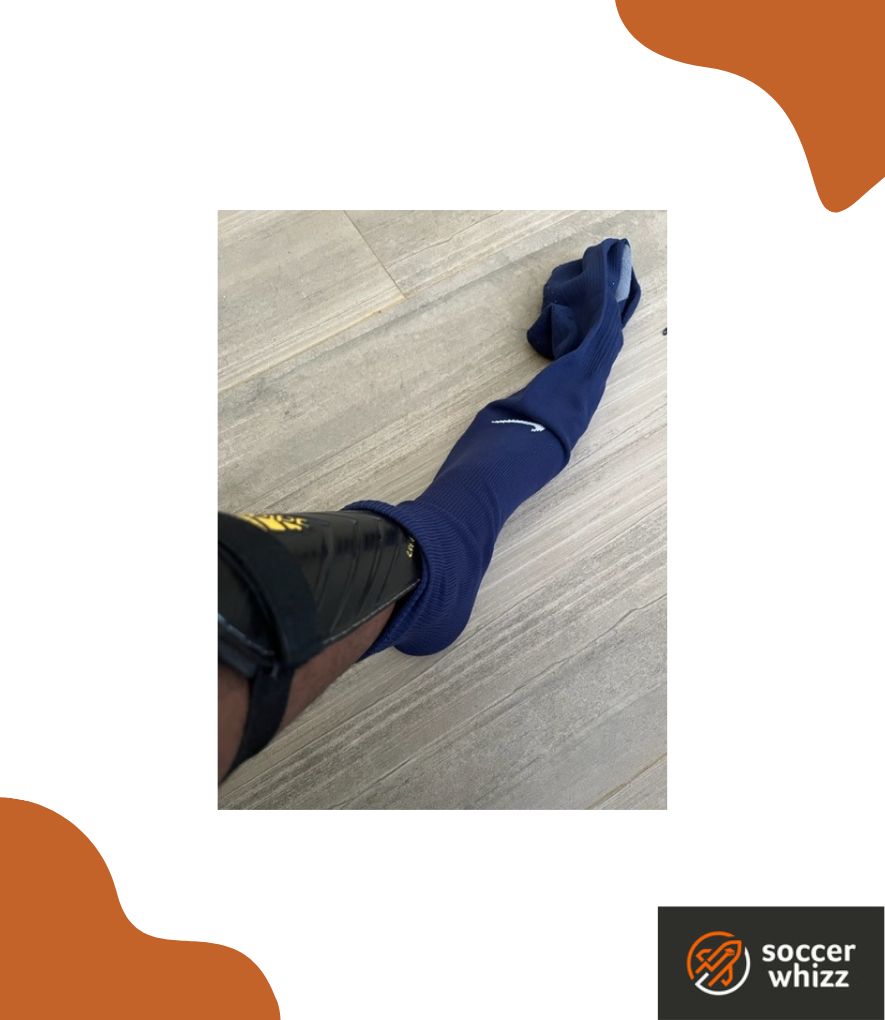
You’ll end up with the end result looking like the pictures below:
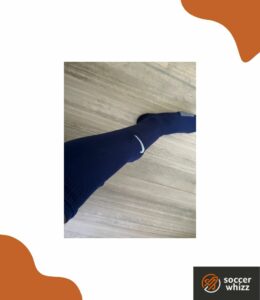

The shin guards are completely covered by the soccer socks, which also act to keep them in place.
Make sure you use soccer socks that fit snugly on your leg without cutting off circulation.
After all, you’ll need all the oxygen and blood flow that you can get when participating in an intensely physical sport of this nature.
6. Wear your cleats or turf shoes
The final step involves putting on your soccer shoes.
If you prefer wearing cleats, then this is the step where you wear these.
Alternatively, if turf soccer shoes are your footwear of choice, then you’d put them on at this step.
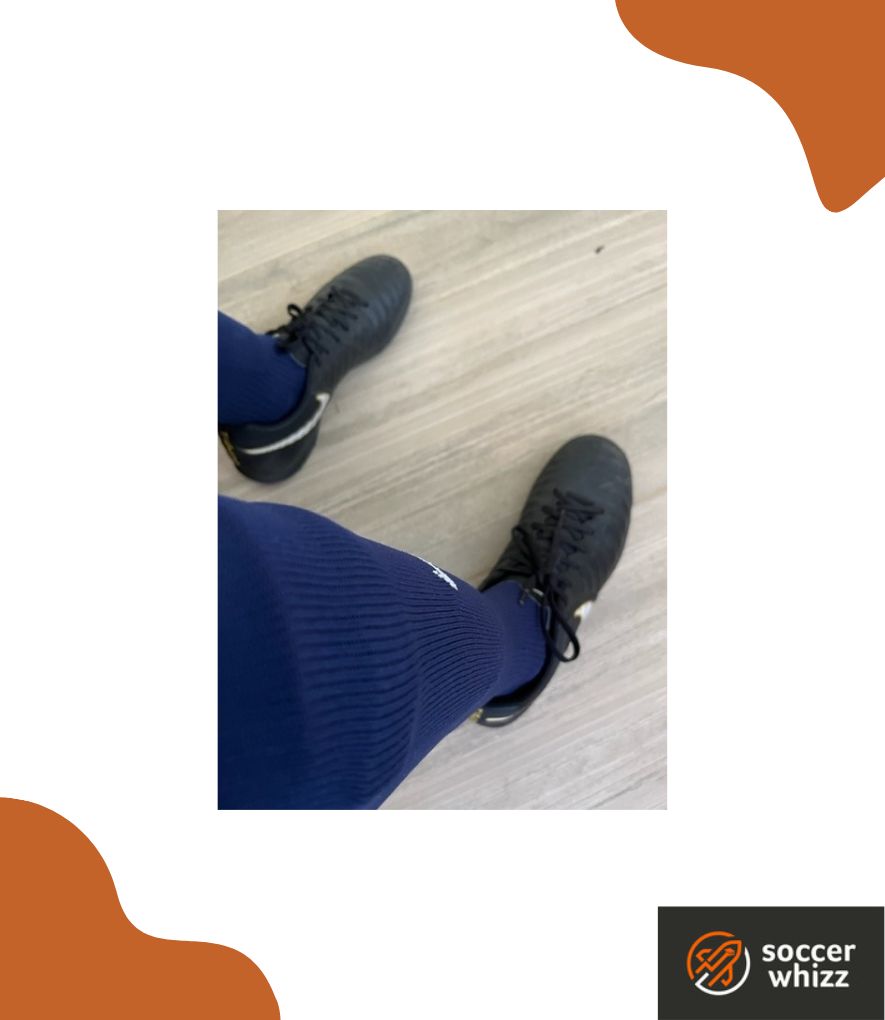
It’s important to note at this point that good footwear that’s the right size for you shouldn’t get in the way of your shin guards and how they’re positioned in any way whatsoever.
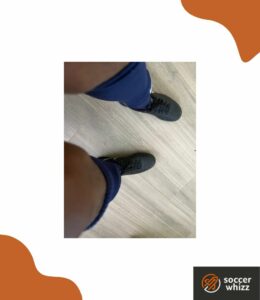

Which way do soccer shin guards go?
Most of the shin guards that you see on shelves at physical retail stores, as well as the outlets online, have a specific curvature that indicates how they wrap around your leg.
Have a look at the image of a basic shin guard below:
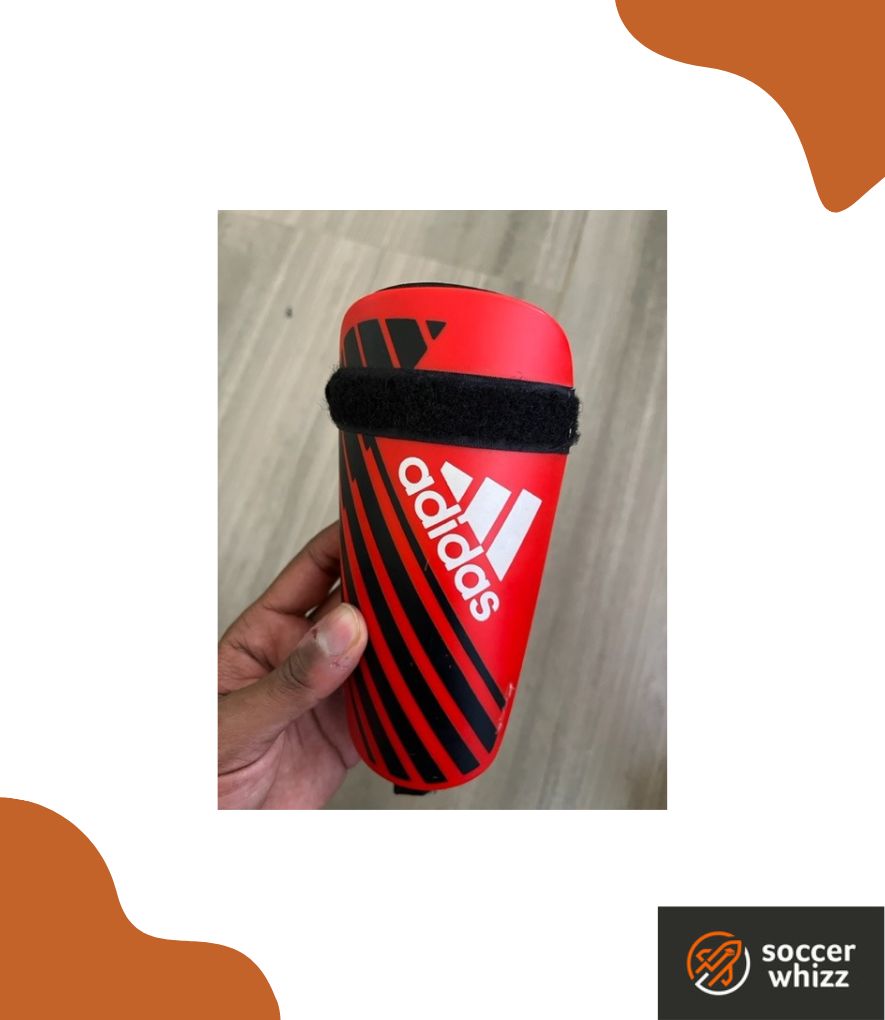
You’ll want to make sure the part of the shin guard which curves outwards rests comfortably on your leg, like this:
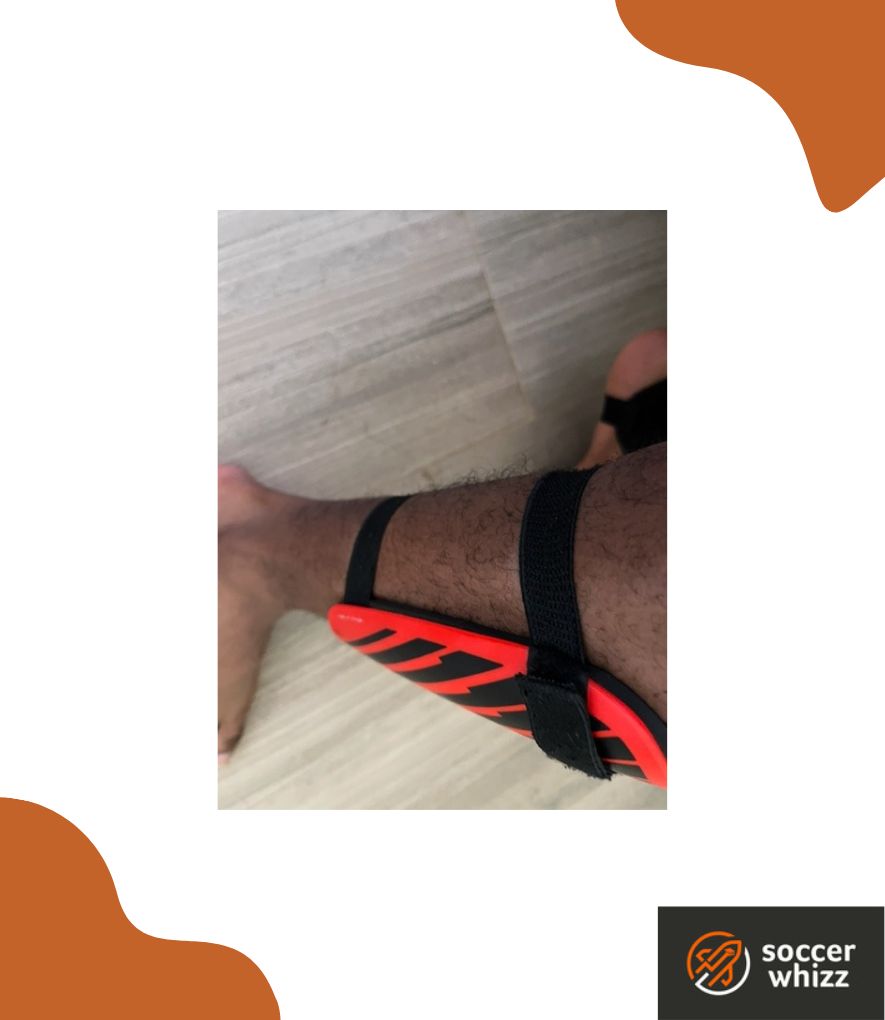
What this means is that the hard plastic shell should be outward facing, like this:
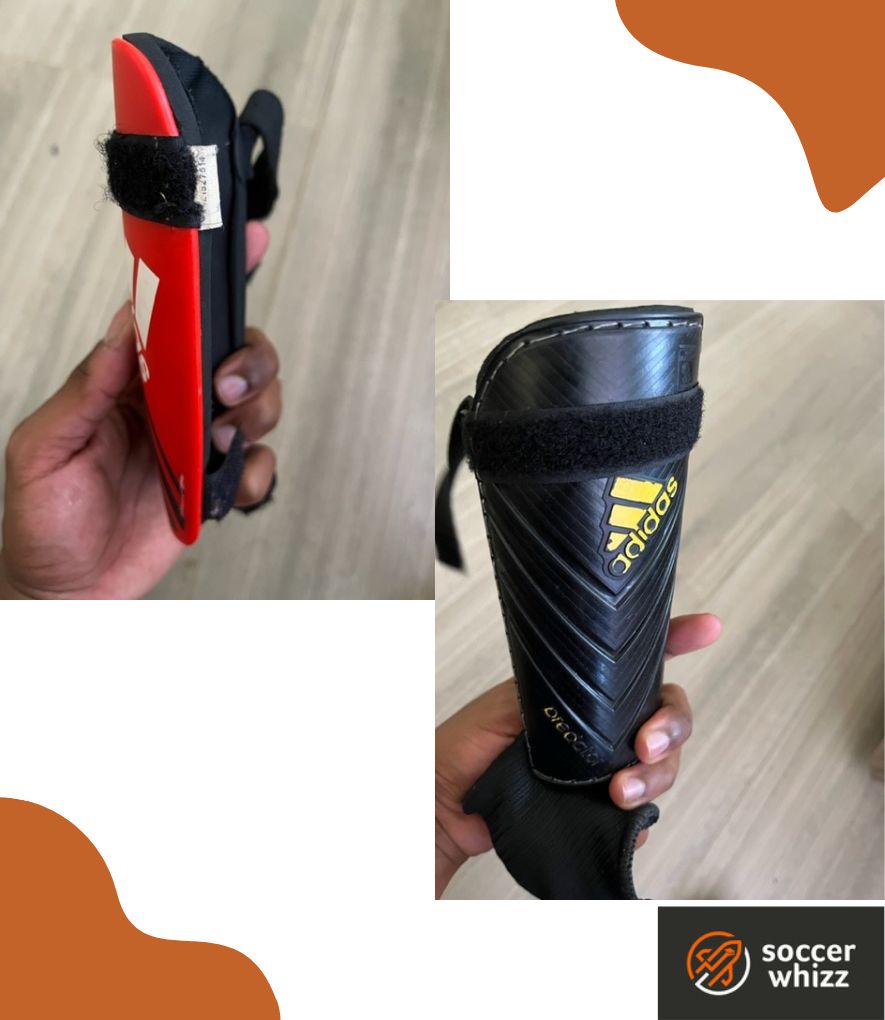
With the softer padding present on the inner lining of the shin guard resting on your leg.
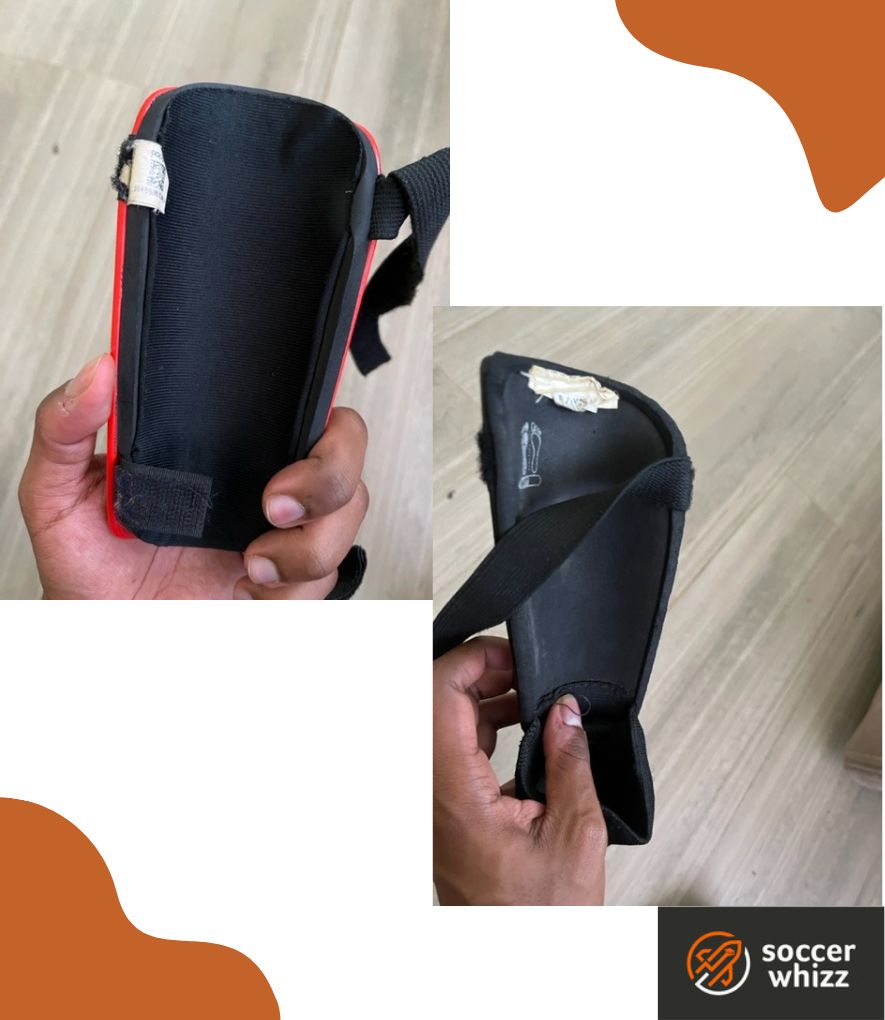
The good thing with shin guards is that you’ll know immediately whether you’ve put them on the right way, as when they’re worn incorrectly, they won’t rest on the leg properly.
You’d also experience difficulty fitting the soccer socks over them, as the fit would feel uncomfortable, not to mention the fact that it would look weirdly out of place.
For example, can you imagine if you wore your shin guard the wrong way around?
Your team mates would certainly get a few laughs out of that!
Why do soccer shin guards go under socks?
The answer to this question is pretty simple.
Soccer socks are used to secure shin guards in place, and that can only be done if they’re worn over shin guards in the first instance.
This is why soccer socks are long as they cover the entirety of the leg and the shin guard underneath, and they’re also made to be tight so that your shin guards don’t move about inside the sock as you play.
As a matter of fact, the English Football Association requires the shin guards worn by professional players to be made of suitable material and be covered by soccer socks.
They also stipulate that a shin guard accidentally lost during a game must be replaced as soon as possible and no later than when the soccer ball next goes out of play.
More so, your shin guards should be covered by the socks for safety reasons.
This is because the plastic materials that the shin guards are made of could cut or injure someone else if physical contact between two players was made during a game.
Closing thoughts
And that wraps up our comprehensive guide on how to wear your shin guards for soccer!
Hopefully you’ll have found this post very informative.
If you prefer a more visual explanation of how to put this piece of equipment on, then you can have a watch of the video below as it goes into a lot of detail:
For similar tutorial style content, you can check out another one of our guides on the website, concerning:
- All the soccer shin guard sizes;
- How to clean soccer shin guards properly;
- The best soccer shin guards in 2023; or
- Our post on how to wear soccer socks correctly
Enjoy the reading!
If you enjoy the content that I create and would like to buy me a coffee, then I’d really appreciate it!
Any money that I earn through this donation will be re-invested into more content for this website.
Additionally, by sending in a donation you’ll also receive a copy of my recently released 190+ page eBook on Soccer Ball Care, as well as be subscribed to our mailing list where you’ll be regularly informed on the latest developments concerning the Soccer Whizz blog.
- Future Icons: Europe’s Emerging Midfield Maestros Set for Glory - December 4, 2023
- Kickstarting a Revolution: How Soccer Transformed the United States Over the Last Four Years - October 7, 2023
- 4-1-4-1 Soccer Formation [Analysis] - September 23, 2023

